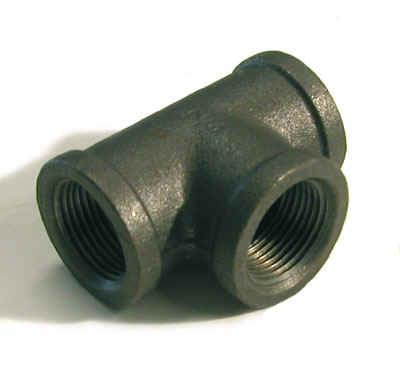Contaminated Pipe Fitting from Taiwan

Sometime between January 27 and February 8, 1983, a 10 to 20 millicurie cobalt-60 source was inadvertently mixed in with 76.8 tons of scrap steel, melted down, and cast into pipe fittings at the Taiyang Steel Company.
The radioactive fittings were then shipped to the U.S. and distributed by Ace Hardware. They were discovered in a survey by health physicists at GA Technologies after a plumber had replaced a fitting in a "hot sink." The radioactive fitting turned out to have been purchased at a local hardware store in La Jolla, California.
When it was determined that the surface exposure rates were all below 0.08 mR per hour and that no risk existed to the public, the NRC decided not to place any restrictions on the distribution of the material. Nevertheless, they encouraged Ace Hardware to return the fittings to Taiwan.
The following information is from an old version of NRC Inspection Manual, Manual Chapter 1302 Action Levels for Radiation Exposures and Contamination Associated with Materials Events Involving Members of the Public.
"On August 29, 1984, Region V was informed by GA Technologies, La Jolla, California, of radioactive contamination in pipe fittings. The radioactivity was identified as Co-60 as the only contaminant and was measured as 0.5 to 0.7 Sv/hr (0.05 to 0.07 mrem/hr) at the surface [The actual reported exposure rates were 0.05 - 0.07 mR/hr. Note that the NRC conversion from mrem/hr to Sv/hr is incorrect. pwf]. The highest concentration of Co-60 was 7.8 Bq/g (0.21 nCi/g). The fittings had been imported from Taiwan. A later analysis of the incident estimated that a 740 MBq (20 mCi) source of Co-60 had been mixed with 76.8 tons of scrap in a single batch of steel that was cast into products (such as the pipe fittings) exported to the United States. The maximum radiation dose that any person would have been likely to receive might have come from where the pipe fittings were stored, or were installed in a plumbing system. The dose rate drops to less than 10 percent of the surface dose when the distance from the surface of the contaminated fittings is 5.1 cm (two inches) or more. Given this information, the maximum radiation dose would be 0.88 mSv/yr (88 mrem/yr).
A second exposure pathway was evaluated for drinking water exposure because of leaching of Co-60. Based on the maximum activity of 37 Bq/g (1 nCi/g), and the total quantity of Co-60, in the pipe, of 350 grams, a body burden of 13 kBq (350 nCi) was calculated. At the time of this incident, this was less than one-tenth of the occupational maximum permissible body burden of 370 Bq (10 mCi) from ICRP 2. The maximum exposure to any individual possessing one or more contaminated pipe fittings was determined to be very low and NRC concluded that there was no threat to public health and safety."
By a curious coincidence, cobalt-60 contaminated steel was melted down in late 1982 by Taiwan's Hsin Jong Iron and Steel Mfg. Co., and formed into rebar that ended up being used in home construction.
Donated by the Nuclear Regulatory Commission courtesy of Darrel Wiedeman.
References
- NRC Inspection Manual, Manual Chapter 1302 Action Levels for Radiation Exposures and Contamination Associated with Materials Events Involving Members of the Public.
- Nuclear Regulatory Agency SECY-84-452 Policy Issue Information. Contaminated Pipe Fittings Discovered Among Steel Castings Imported from Taiwan. November 29, 1984.
- Darrel Wiedemann, personal communication.
